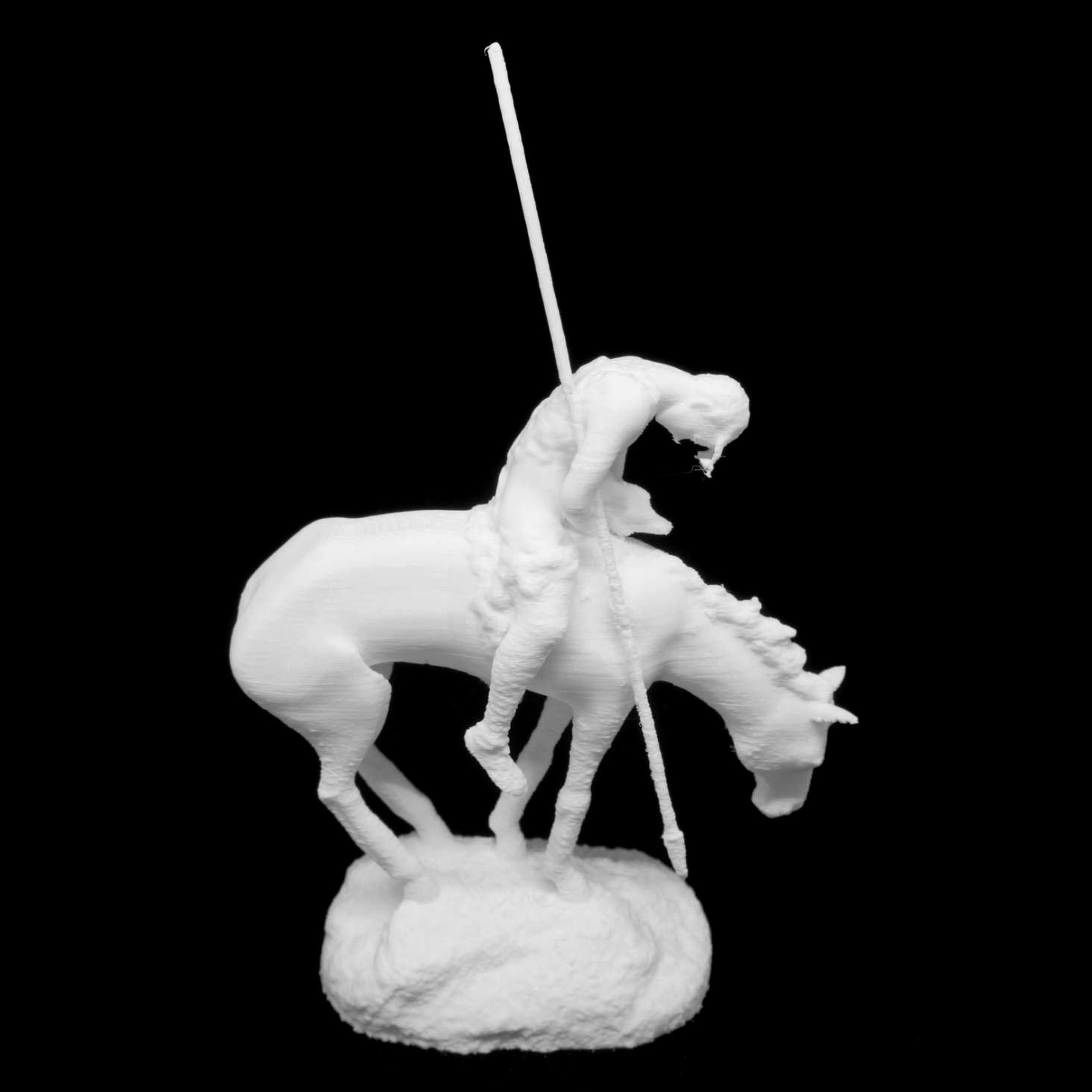
The End of The Trail From the Rees-Jones Collection at The Amon Carter Museum in Fort Worth, Texas
myminifactory
James Earle Fraser's End of the Trail is a world-renowned masterpiece featured in The American West in Bronze, 1850-1925. First created in 1894, this iconic sculpture reflects Fraser's childhood experiences growing up in Dakota Territory; as he wrote in his memoirs, "as a boy, I remembered an old Dakota trapper saying, 'The Indians will someday be pushed into the Pacific Ocean.'" The artist later explained that, "the idea occurred to me of making an Indian which represented his race reaching the end of the trail, at the edge of the Pacific." In 1915, Fraser unveiled a monumental plaster version of the work at the Panama-Pacific International Exposition in San Francisco, earning widespread acclaim and a gold medal. Within months, thousands of prints and photographs of the statue were sold, and by 1918 Fraser began producing bronze reductions of the sculpture in two sizes. Today, an online image search for "End of the Trail" yields tens of thousands of results, as the work has been endlessly reproduced in paintings and prints, on posters, T-shirts, pins, bags, belt buckles, and bookends. It was even featured on the cover of The Beach Boys' 1971 album Surf's Up. Despite its appeal as a popular American icon, Fraser intended the work as a pointed commentary on the devastating effects of Euro-American settlement on American Indian nations confined to government reservations. Seated upon a windblown horse, Fraser's figure slumps over despondently, embodying the physical exhaustion and suffering of a people forcefully driven to the end of the trail. Fraser's sculpture has been interpreted in various ways: while some critics viewed the Indian's decline as a necessary step in America's westward "march of progress," others saw the work as a remorseful indictment of "the national stupidity that has greedily and cruelly destroyed a race of people possessing imagination, integrity, fidelity, and nobility," as an unnamed critic wrote in Touchstone in 1920. The sculpture continues to resonate with audiences in the twenty-first century, taking on new meanings and new forms in the digital age. I spoke with contemporary painter and sculptor Jeffrey Gibson about Fraser's End of the Trail, a work he describes as "having a very ambivalent relationship with over the years." Born in Colorado Springs, Jeffrey is half Cherokee and a member of the Mississippi Band of Choctaw Indians. His American Indian heritage together with his formal training as an artist—at both the Art Institute of Chicago and the Royal College of Art in London—have shaped his perspective on this work of art. The Rees-Jones Collection, featuring works from the eighteenth century through the 1920s, including paintings, watercolors, sculpture, and photographs, has been gathered by Dallas collector Trevor Rees-Jones. Years after visiting the Amon Carter Museum of American Art as a young boy, Rees-Jones's experience led him to create one of the finest private collections of art of the American West. This object is part of Scan The World, a non-profit initiative introduced by MyMiniFactory, through which we are creating a digital archive of fully 3D printable sculptures, artworks, and landmarks from across the globe for public access.
With this file you will be able to print The End of The Trail From the Rees-Jones Collection at The Amon Carter Museum in Fort Worth, Texas with your 3D printer. Click on the button and save the file on your computer to work, edit or customize your design. You can also find more 3D designs for printers on The End of The Trail From the Rees-Jones Collection at The Amon Carter Museum in Fort Worth, Texas.
